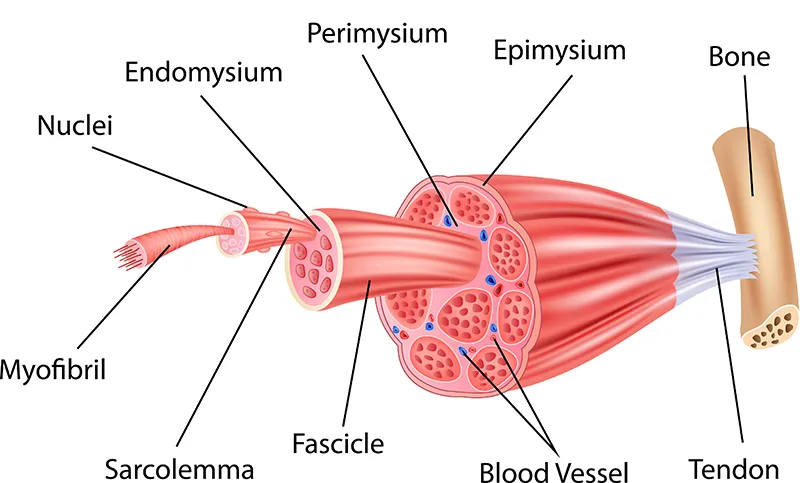Therapy SERVICES
Unlocking the Healing Potential of Myofascial Release
In the realm of therapeutic interventions, Myofascial Release (MFR) emerges as a gentle yet potent force, honing an intrinsic capacity to alleviate physical suffering and enhance functional mobility. This type of manual therapy technique, which involves applying gentle, sustained pressure to the myofascial connective tissues, aims to eliminate pain and restore motion by easing the tension and tightness in the fascia.
The technique fosters a symbiotic relationship between the therapist’s discerning touch and the body’s inherent wisdom to heal. Delving into the tapestry of the human body, MFR navigates through the fascial network—an interwoven system of connective tissues encapsulating muscles, organs, and bones. This overview aims to unfold the holistic essence of MFR, exploring its profound impact on physical well-being, underlying mechanisms, practical applications, and its integrative role in the contemporary therapeutic landscape.

What Patients Say About Cranial Pain Solutions…

The Fascial Framework: Understanding the Basics
Fascia, the silent guardian and architect of our bodily integrity, presents a labyrinth of connective tissue interconnecting every muscle, nerve, organ, and cell. The fascia is a thin, tough, elastic type of connective tissue that wraps most structures within the human body, including muscles, historically shadowed by the dominion of more conspicuous muscular and skeletal structures. The earliest fascial studies trace back to the works of Andrew Taylor Still and Ida Rolf, who heralded fascia as a crucial determinant of posture and motion. Their seminal insights permeate contemporary understanding, where fascia is revered for its dynamic adaptability and mechanotransductive properties.
In dissecting the functional omnipresence of fascia, one uncovers a three-dimensional web that imbues structural continuity and tactile sensitivity across the human form. It is in this intricate matrix that MFR finds its therapeutic sanctuary, aiming to release restrictions, foster fluidity, and rekindle the body’s harmonious rhythms. The fascial interplay with musculoskeletal dynamics signifies its influence on movement patterns, highlighting its susceptibility to injury, strain, and adaptive alterations.
Techniques and Approaches in MFR
Myofascial Release embodies a symphony of techniques, each reverberating with the essence of therapeutic touch. Techniques include sustained pressure and stretching to release fascial restrictions and relax the fascia. Common approaches include direct and indirect MFR, where direct involves applying force to the fascial restriction, while indirect involves guiding the tissue along the path of least resistance.
The subtlety of touch in MFR holds profound significance. A discerning touch unlocks layers of restrictions, guiding tissues back to their innate suppleness and mobility. Tools such as foam rollers and balls also find their place in the MFR realm, allowing for self-myofascial release practices that individuals can integrate into their daily lives.
The Healing Journey: Patient Experiences and Outcomes
Embarking on the journey of MFR, patients find themselves amidst a transformative healing odyssey. MFR can help reduce pain levels, improve the quality of life, and increase the flexibility and mobility of muscles and joints. A myriad of case studies echo the effectiveness of MFR, reflecting significant improvements in conditions such as chronic pain like fibromyalgia, and aiding in the recovery process after injuries, surgeries, or trauma.
Comparison with Other Therapeutic Modalities
MFR flourishes in the garden of therapeutic modalities with its unique blossom of benefits. It shares harmonies with modalities like massage therapy and chiropractic care, yet maintains its distinct essence. The comparative study unveils the specialized attributes of MFR, underscoring its place in the broader spectrum of integrative healthcare.
Challenges and Future Directions
Navigating through the currents of MFR practice, there lie challenges and barriers that seek thoughtful consideration and innovation. Criticisms, often revolving around limited research and standardized protocols, beckon for enhanced scientific scrutiny and methodological refinement.
Myofascial Release FAQs
Myofascial release is a manual therapy technique that focuses on releasing tension and restrictions within the fascia, a connective tissue that surrounds and supports muscles, organs, and other structures in the body. Fascial restrictions can occur due to trauma, inflammation, poor posture, or repetitive movements, leading to pain, limited range of motion, and decreased flexibility. During a myofascial release session, a therapist applies sustained pressure and stretches to the affected areas, helping to release adhesions and restore the natural movement of the fascia. This therapy can be beneficial for various conditions, including muscle pain, headaches, fibromyalgia, and sports injuries. Myofascial release aims to improve overall body alignment, promote relaxation, and enhance physical performance.
Myofacial Release can be beneficial for a variety of conditions and symptoms, such as chronic pain, restricted mobility, muscle imbalances, and even emotional stress.
By applying gentle pressure and stretching techniques to the affected areas, myofascial release helps to break up adhesions and knots in the fascia, restoring its flexibility and promoting better function of the muscles and joints. This therapy can provide relief from pain, improve range of motion, and enhance overall well-being.
The duration of a Myofascial Release treatment can vary depending on several factors, including the individual’s condition and the severity of their symptoms. Generally, a session can last anywhere from 30 minutes to an hour or more.
Myofascial Release can indeed be beneficial in managing and reducing stress levels. This technique focuses on releasing tension and tightness in the fascia, the connective tissue that surrounds and supports our muscles and organs. When we experience stress, our bodies often respond by tensing up and holding onto this tension, leading to discomfort and pain. Myofascial Release helps to alleviate this tension by applying gentle pressure and stretching the connective tissue, allowing for improved blood flow, increased relaxation, and enhanced overall well-being. By targeting the physical manifestations of stress, Myofascial Release can provide relief and promote a sense of calmness and relaxation.

Therapy Services

Craniofacial Physical Therapy
Advanced joint mobilizations and soft tissue releases for the temporomandibular joint (TMJ), Cervical Spine, and Thoracic Spine.

TMJ
Therapy
Therapy to alleviate pain and discomfort associated with temporomandibular joint disorders. We provide effective techniques to improve jaw function and overall quality of life.

Vestibular
Therapy
Restore stability, reduce dizziness, and improve your quality of life. We offer holistic, evidence-based treatments designed to provide long-term relief from vertigo and balance disorders.

Myofascial
Release
Myofascial release utilizes a gently applied pressure for a slow release of fascial restrictions to allow for more lasting results of increased mobility, reduced pain, and improved function.

Integrative Dry Needling
Integrative dry needling utilizes a unique approach to treat both the area of symptoms (trigger points) and the source of the dysfunction especially along nerve pathways.

Individualized Program
Based on a thorough assessment of your movement patterns, source of pain/dysfunction, and your goals, we will devise an individualized therapeutic exercise program.

Request Free Phone Consultation
Request a free 15 minute phone consultation to help us learn about the condition or issues you are experiencing and find out how you could benefit from our services .

Have a Question About Our Services?
Please fill out the form below and we will contact you.







